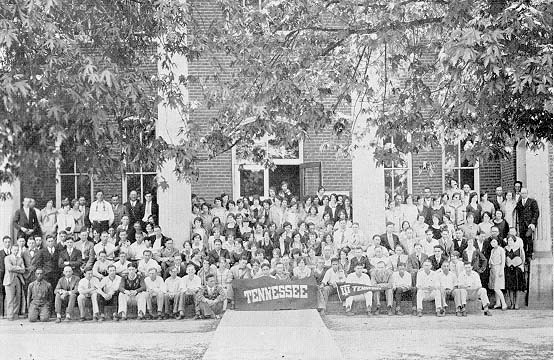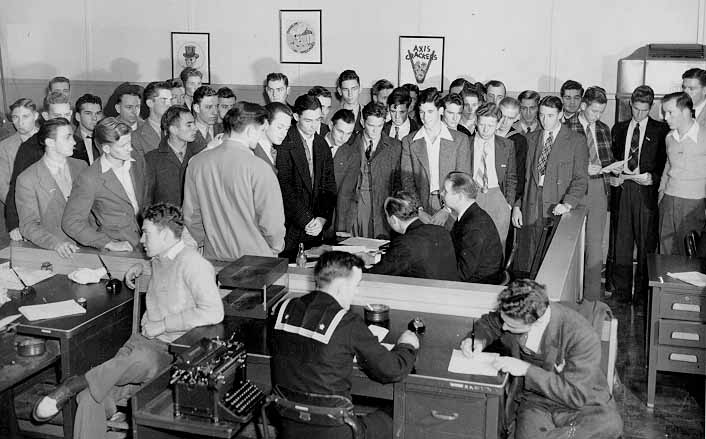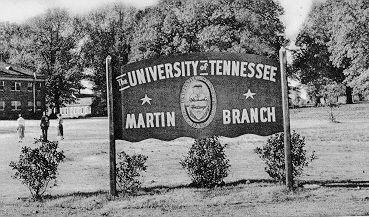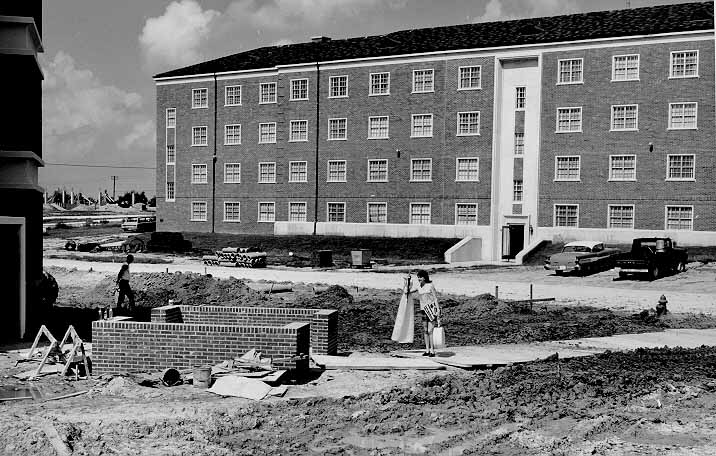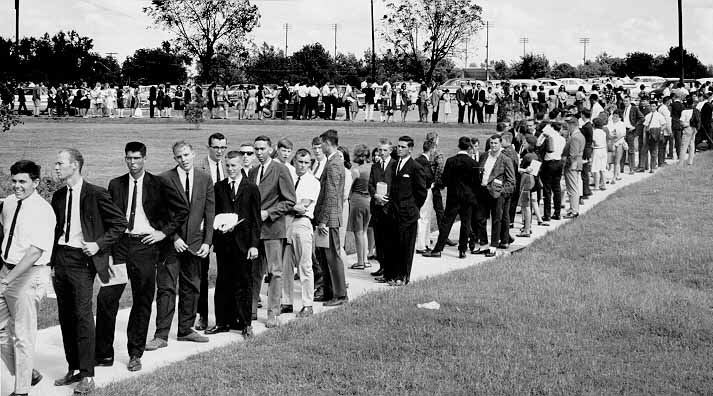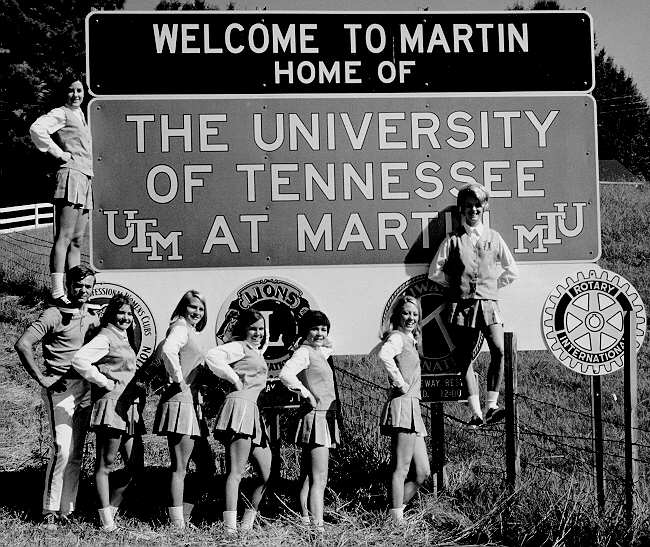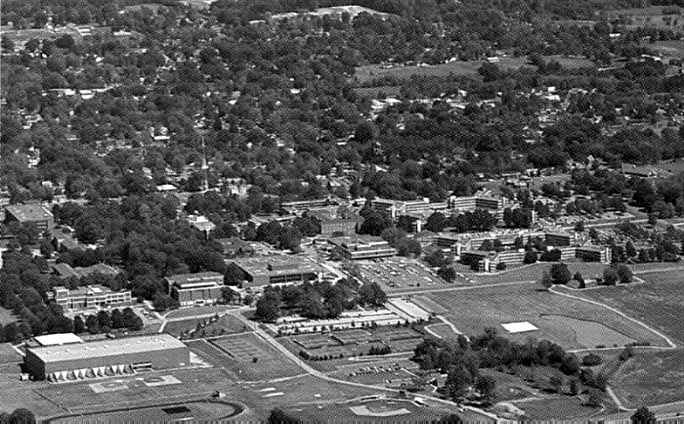Early Origins and Hall-Moody Institute
The University of Tennessee at Martin traces its origins to 1900 and the establishment of the Hall-Moody Institute. Built on a site donated by Ada Gardner Brooks at what was then the edge of town, and named for two locally prominent Baptist ministers, Hall-Moody was a denominational school offering a wide range of studies. The full thirteen-year course taught students from the primary grades through what now would be considered the first years at a modern college level. A name change to the "Hall-Moody Normal School" in 1917 followed the role the school came to pursue as teacher training became its major focus. Finally, after the curriculum was standardized to meet state requirements five years later, the school became "Hall-Moody Junior College." Declining enrollments and financial difficulties caused the Tennessee Baptist Convention to consolidate Hall-Moody with a similar institution, Union University, in Jackson in 1927.
Transition to a State Institution
Closure of one of the state's most praised small colleges concerned many citizens of west Tennessee. As Hall-Moody announced its impending closure, several influential citizens from the area petitioned the state to take over the facility and organize a junior college under the auspices of the University of Tennessee. Since the new institution would operate under the UT banner but be controlled by the legislature, University president Harcourt Morgan was less than thrilled. Knowing of a Hall-Moody capital campaign that had failed only the year before, Morgan agreed to accept the proposition on the condition that the local community acquire the property and find it enough space to expand. To Morgan's surprise the City of Martin and Weakley County each promptly agreed to float $100,000 tax bonds. The money purchased the Hall-Moody campus--the old Administration Building, the Ellis Home for Young Women (Reed Hall), the Lovelace Home for Young Men (Freeman Hall), a science hall, the Old Dining Hall, an unnamed men's dormitory, and gymnasium--and eighty acres of another property adjoining the campus to the west, Woodley Farm. On February 10, 1927, Senate Bill Number 301 established the University of Tennessee Junior College in Martin. A little more than a month later, on March 29, it was officially approved by Governor Austin Peay. The act declared that the State of Tennessee would "create and establish a junior college of agriculture, industrial arts, and home economics in Martin, Weakley County, Tennessee, and . . . provide for its maintenance, management and operation."
Establishment of the University of Tennessee Junior College
The Hall-Moody Junior College closed its operations on June 1, 1927. The first Executive Officer (Chancellor), C. Porter Claxton, had his hands full. Personally responsible for virtually everything about the new campus, his duties ranged from recruiting students to buying a lawn mower. On September 2, a faculty of fourteen began classes for 120 students at the Tennessee Junior College (shortly the University of Tennessee Junior College), most of whom were returning Hall-Moody students. Soon after, two new buildings were constructed to house the Home Economics and Science programs. Both buildings, presently the McCombs Center and Sociology Building, were completed by 1929. During the next three years the junior college built a state-of-the-art gymnasium, a central steam plant, an industrial arts building (now Crisp Hall), and greenhouse. The number of campus facilities had doubled by 1931, just in time for the Great Depression.
The Great Depression and Recovery
During the Depression, UTJC enrollments declined and construction came to a standstill. By 1933, the college's student enrollment had dropped to just 96. Faculty members were released, salaries were reduced, and intercollegiate athletic events were suspended. Though the Knoxville campus endured a similar decline, Claxton was made a scapegoat on the grounds that he had not recruited enough students. Not exactly fired, the young man was dismissed as head of UTJC and transferred to a minor post as an instructor at the main campus. His replacement in Martin was a personal friend and former UT class officer, Paul Meek. The junior college began to gradually recover with increased enrollment and the construction of a new dining hall, which is now theCommunications Building. Throughout the middle and late 1930's, there were distinct signs of recovery as enrollment crested three hundred in 1937 and reached 336 by 1940. However, this brief period of good fortune and financial prosperity reversed with the entrance of the United States into the Second World War.
World War II Impact
As war spread across Europe and the U.S. was drawn into conflicts in two hemispheres, virtually the entire male student complement at UTJC departed for service. Enrollment dropped dramatically. By 1943, the students enrolled at UTJC had plummeted to 115, of which only twenty-four were male, and there was public talk of closing the institution. Fortunately, three years before Meek had the college had been able to sway the Civil Aeronautics Administration into a small Civilian Pilot Training program on campus. In 1943 this program was hastily expanded into one of the many centers for Navy pilot trainees scattered across the country. The military program rescued the sagging financial health of the institution and left the campus three buildings built specifically for the training program. It also gave the school a role in the war effort that enhanced its image with returning war veterans a few years later.
Post-War Expansion
Returning servicemen caused the largest influx of students in the school's history. Between the end of the war in the fall of 1945 and the beginning of fall term in 1946 the student population more than tripled to 649, over five hundred of which were veterans. Construction and faculty hiring became a priority. Twenty-six new instructors in almost every field were hired. Government building materials, stockpiled for the war effort, were purchased from nearby Fort Tyson Army Base and quickly assembled to meet the overflow of new students. The post war surge encouraged the construction of a Student Activities Building, dormitories (Lovelace Hall) and apartments (Mount Pelia Lodge). Even recreational travel trailers, parked in Lovelace Grove, were used to house married couples.
1950s Growth and Campus Development
The 1950's brought steady growth to the junior college in enrollment, higher education quality and the construction of new facilities. The number of students doubled during the 1950's and nearly reached one thousand before the end of the decade. The scope of education increased significantly as well. Programs expanded, and in 1951 the state legislature passed House Bill 264 which designated the first college as a four year university and renamed the junior college the University of Tennessee, Martin Branch. Of necessity, more classrooms, offices, and living quarters were built to meet the new standards required for a four year institution. The Agriculture-Biology-Library Building (now Brehm) was completed in 1951. Many said that this building was the first to give the college a sense of genuine institutional permanence. Browning Hall (currently the Business Administration Building) was completed later the same year as a men's dormitory. Westview Terrace, a temporary housing complex for married students, was finished in 1955 and two years later, Clement Hall was built as a new women's dormitory. The Administration Building was built to replace the aging original administration facility in 1959, and a Home Management House was completed the same year.
1960s Expansion and New Identity
The 1960's brought to campus a new generation of students with higher expectations and greater demands. The campus population jumped from 1,123 students in 1960, to 4,197 in 1969. Course selection increased and new programs developed. More students required expanded housing, and the decade saw the largest construction boom in the school's history. Carter's Motor Inn in Martin, later known as Shannon Hall, was purchased to temporarily house students while newer buildings were constructed. A series of new dormitories were built during the sixties, which included McCord, Austin Peay, Ellington, Cooper and Browningresidency halls. Along with dormitories came apartment complexes which included the Grove Apartments and University Courts. The need for expanded office space and classrooms for new programs led to the construction of the Engineering-Physical Science Building, the Physical Education/Convocation Center, Paul Meek Library, and the Holt Humanities Building. Other facilities built to support the burgeoning student body and faculty included a remodeled Football Stadium, the Boling University Center, a new steam plant and Maintenance Center, and an official residence for the chancellor.
University Recognition and Advancements
For the Martin campus, 1967 was a banner year. Following prompting from the UT Board of Trustees, Governor Buford Ellington sign into law House Bill 488 changing the school's name to the University of Tennessee at Martin. Its status as a genuine university was at last secure. That year the football team's 8-1 record earned a trip to a major NCAA bowl game. Though UTM was the decided underdog in the contest, the team pounded the Golden Rams of West Chester State (a Pennsylvania school) to win the Tangerine Bowl. UTM student Linda Sue Workman was crowned Miss Tennessee, as well. Finally, Paul Meek retired after carrying the load as Executive Officer, Dean, or Chancellor for over three decades. The following year the departments of Agriculture, Business Administration, Education, Home Economics and Liberal Arts were elevated to the status of schools. A four-year degree program in Engineering Technology and graduate programs in Education and Home Economics were approved by the Tennessee Higher Education Commission during the same period.
Academic and Structural Growth in the 1970s
Student enrollment levelled slightly during the 1970s, but the scope of academic programs continued to increase as more four year and graduate programs were offered by the university. Programs in music, education, home economics, social work, engineering technology and nursing were independently accredited by the Southern Association of Colleges and Schools Commission on Colleges (SACSCOC) by 1972. To accommodate these new programs, as well as to upgrade and enhance older programs, the university began construction on two new state-of-the-art facilities in the 1970's. The Fine Arts Building was the first of these structures to be completed (1971) and currently houses the Division of Fine and Performing Arts. Three years later, Gooch Hall opened to house offices and classrooms for the Education, Home Economics, and Nursing departments. A Residence Hall Swimming Pool was built in 1975 as a recreational facility for students living in the dorms. UT Martin's first international students (from Venezuela and shortly thereafter from several Arab countries) were welcomed to campus that year as well.
Challenges and Recovery in the 1980s
Enrollment statistics fluctuated in the 1980's as the student population increased to 5,696 in 1983 but dropped to 4,670 in 1988. The recession of the mid and late 1980's was partially to blame for this decline, along with directional changes in curriculum. Quality, however, was still the focus of the university as admission standards rose throughout the eighties and beyond. UT Martin's reputation for preparing students for law, medical, and dental schools has become well known to graduate institutions. To assure that non-traditional students would have the opportunity to attend the university, a Child and Family Resource Center was built in 1980, followed later by the Children's Center. The infrastructure for maintaining campus buildings and grounds was modernized in 1981 when the Maintenance Warehouse and newgreenhouse were constructed. The addition of the large Agricultural Pavilion and new R.O.T.C. Building were completed in the late 1980's to house two of the traditional campus departments. The country's general economic expansion during the 1990's allowed student enrollment to rebound in time to completely modernize the library and student university center.
Leadership Changes and Centennial Celebration
Margaret Perry was selected as institutional Chancellor in 1985, the first woman to head a UT-system school. Her efforts to draw the faculty into meaningful participation with University planning and governance drew wide praise. Her successor, Philip Conn, pushed through a number of far-reaching organizational and changes on campus. He ran aground over a shakeup in programatic priorities and accepted a reassignment to Knoxville as the University celebrated its centennial in October, 2000.
The 21st Century and Future Outlook
The University began its second century by being moved up from the third into the second tier in the U.S. News & World Report's ranking of public colleges its size. The quality and breadth of UT Martin's programs continue to expand, with a new degree program in Public Administration and graduate program in Agricultural Operations. Good for another hundred years or so, the University of Tennessee at Martin's future is brighter now than ever before.
Biographical data on past Chancellors of the University of Tennessee at Martin is also available.


